Results
of pulsar receptions with 3m dish
First
tests I made on 1294 MHz, bandwidth was 2MHz with a
RTL-SDR, observation time 5 hours.
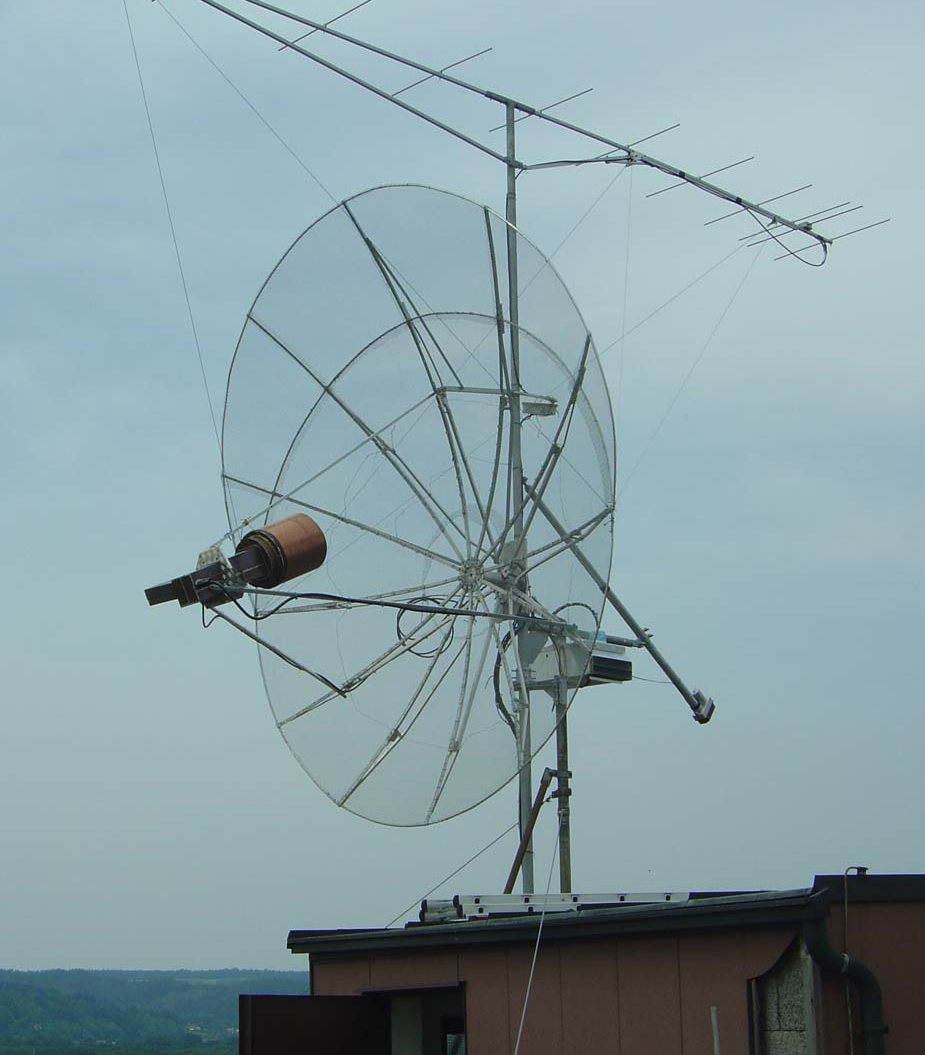 |
After
maybe 10
observations with negative result, I finally detected the
pulsar
also with my 3m dish at home, which I use mainly for terrestrial
contacts.
The
antenna is placed on
top of a building with no obstacles around. This is good for operating
tropo, but worse for observing pulsars, because I pick up a lot of RFI.
It was a nice experience to see that it is possible to detect a strong
pulsar even with moderate sized antenna without large bandwidth.
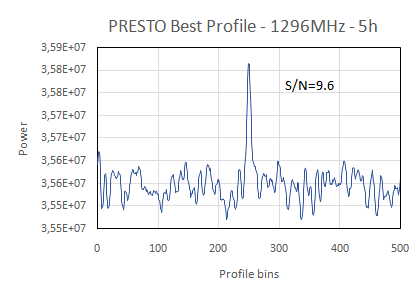
|
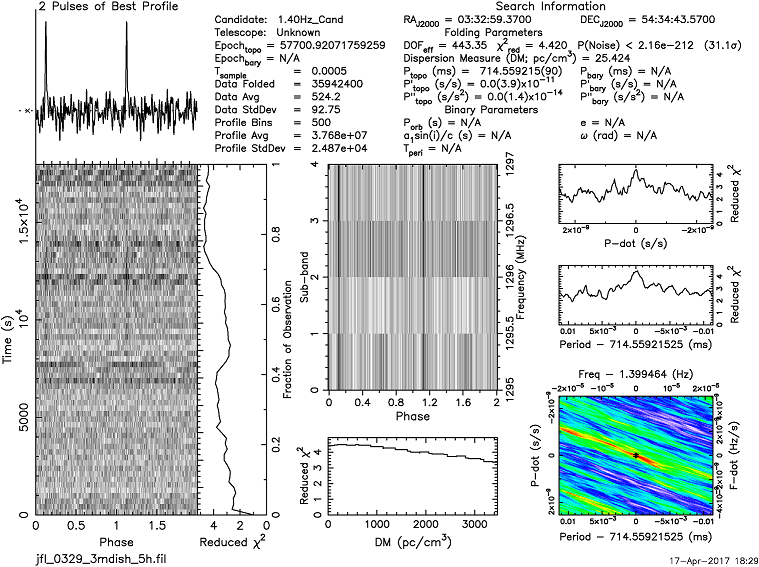
|
As
a next step I added a 70cm feed to the dish. It is a dual-dipole feed
with a square reflector, made of mesh.
In
the middle is a hole of 30cm, so that the 23cm feedhorn can look
through.
This sort off feed
combination is widely used for EME, although the system suffers from
some loss in efficieny on both bands compared to single band feeds.
|
Observations
were made on 420MHz using this antenna, 2-stage preamplifier up at the
feed, 4-pole interdigital filter followed by both a RTL-SDR (2MHz
bandwidth) and an Airspy SDR (10MHz bandwidth).
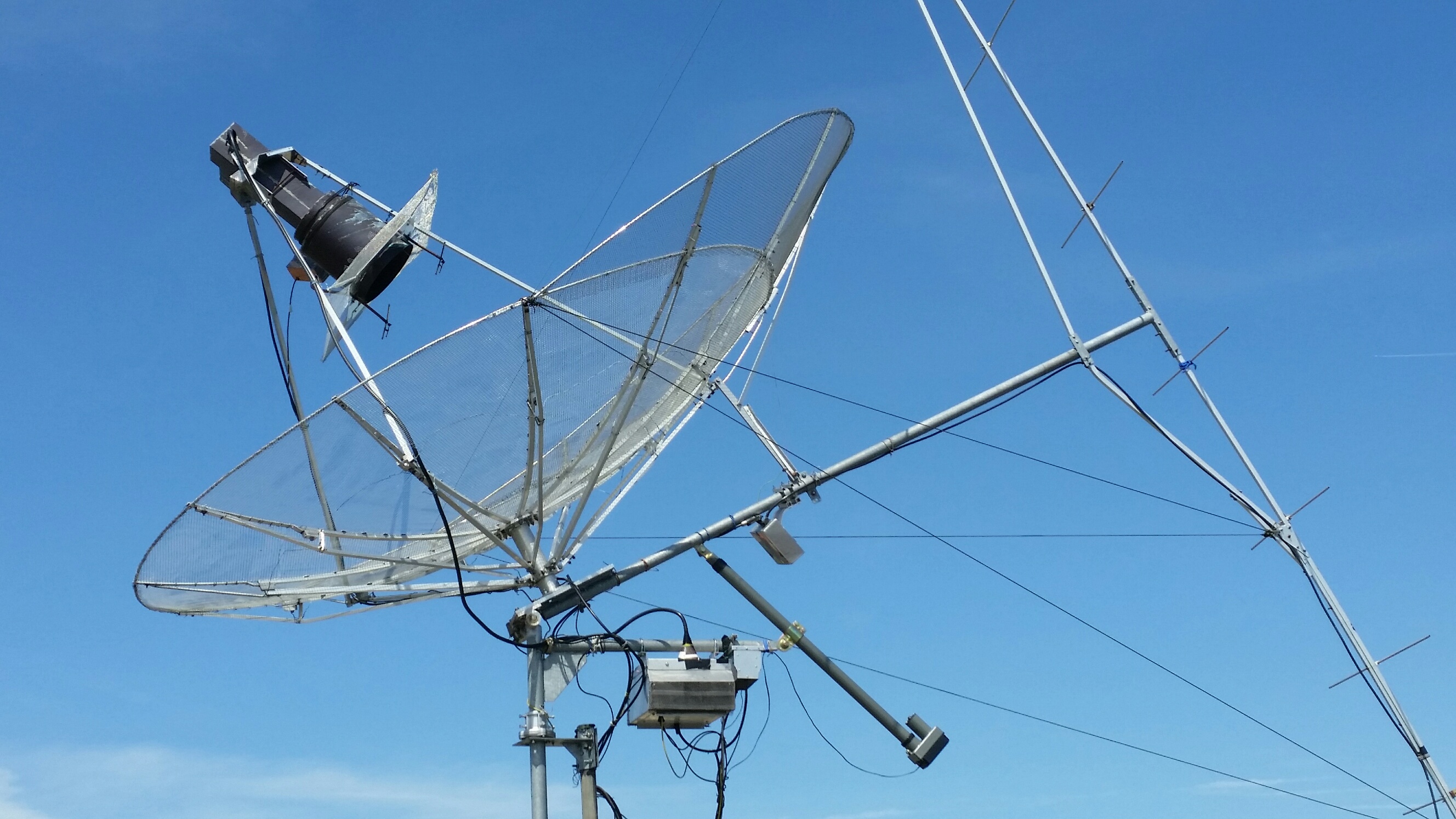
|
|
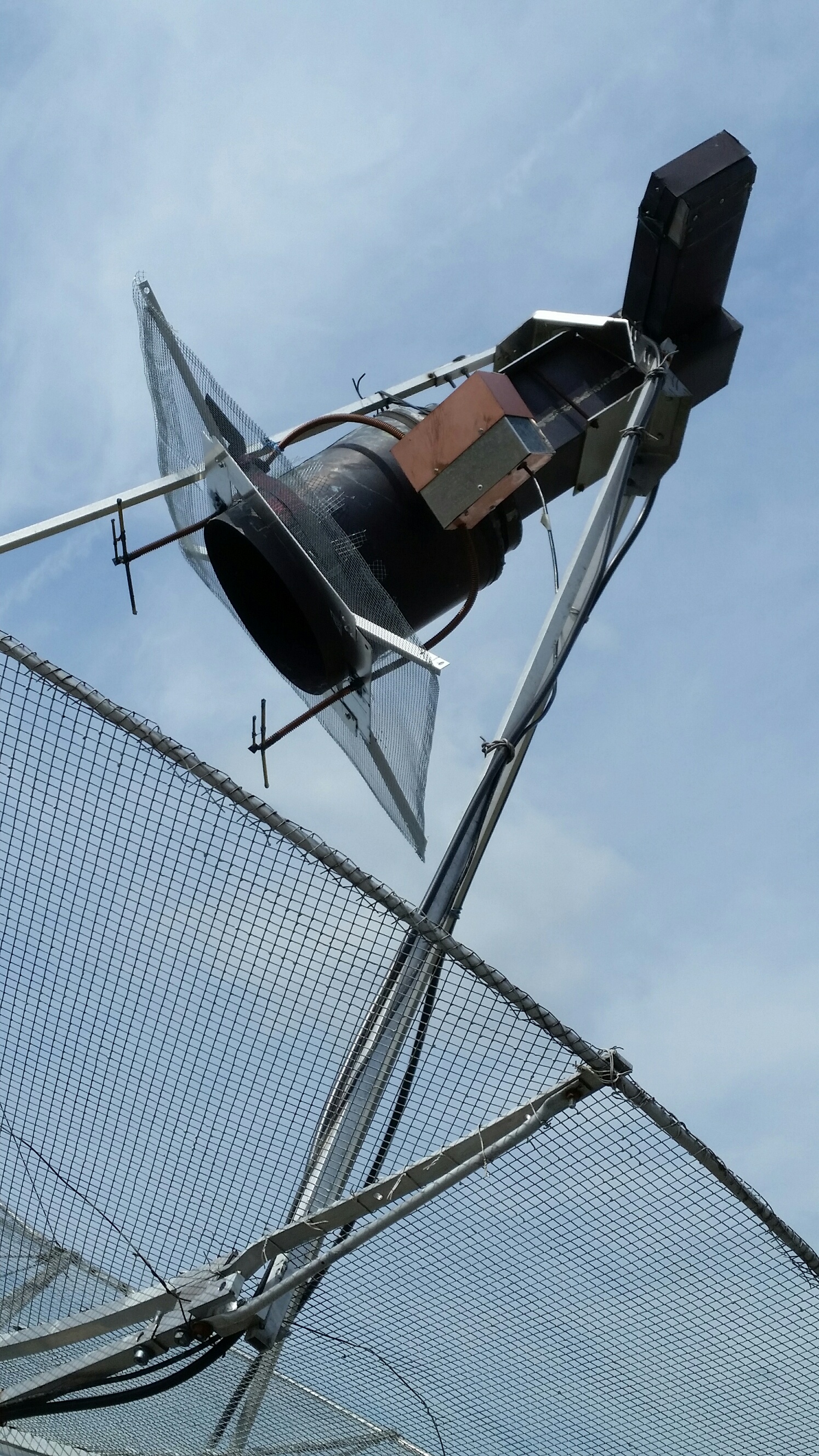
|
See
below the results of a 6 hours observation of B0329+54, using different
software and bandwidth for folding.
2 MHz bandwidth,
software IW5BHY
|
2
MHz bandwidth, software Presto
|
10
MHz bandwidth, software Presto
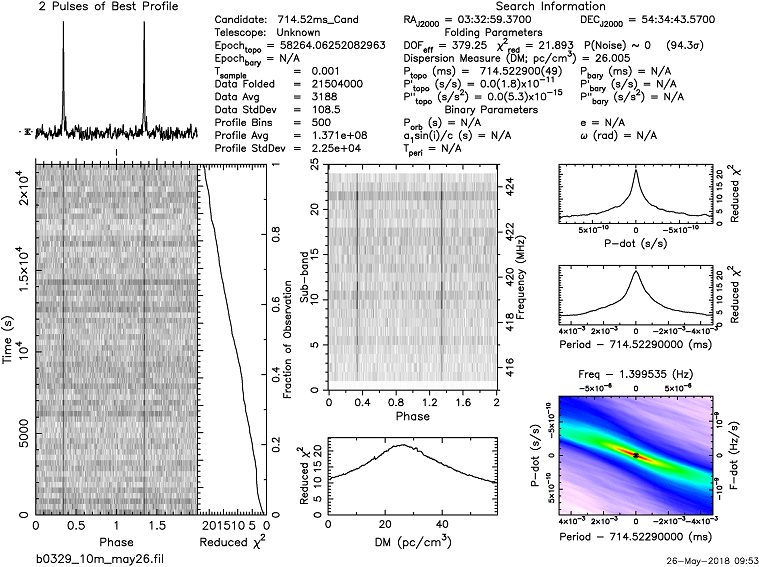
|
To detect other pulsars beside the strong B0329+54, more bandwidth than 2 MHz is necessary.
I could detect some more on 70cm using the Airspy SDR with 10 MHz bandwidth.
B0950+08
 420 MHz, 10 MHz bandwidth
420 MHz, 10 MHz bandwidth
B1642-03
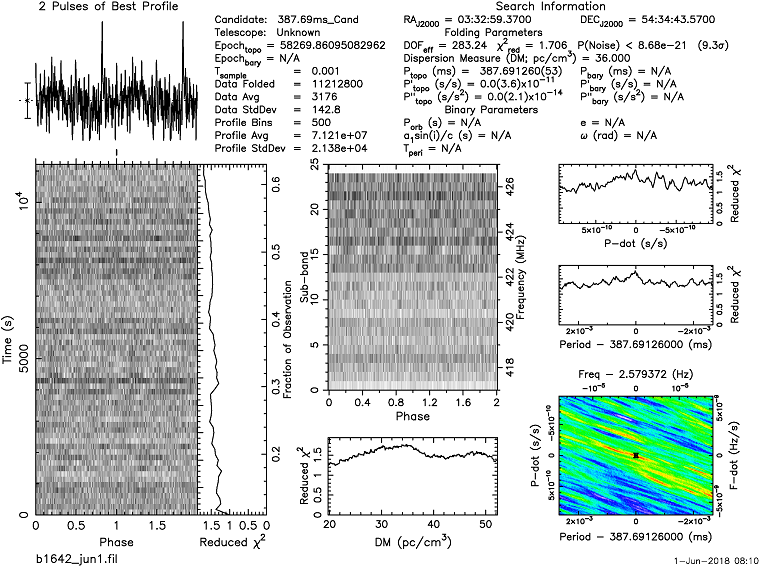 420 MHz, 10 MHz bandwidth
420 MHz, 10 MHz bandwidth
B1929+10
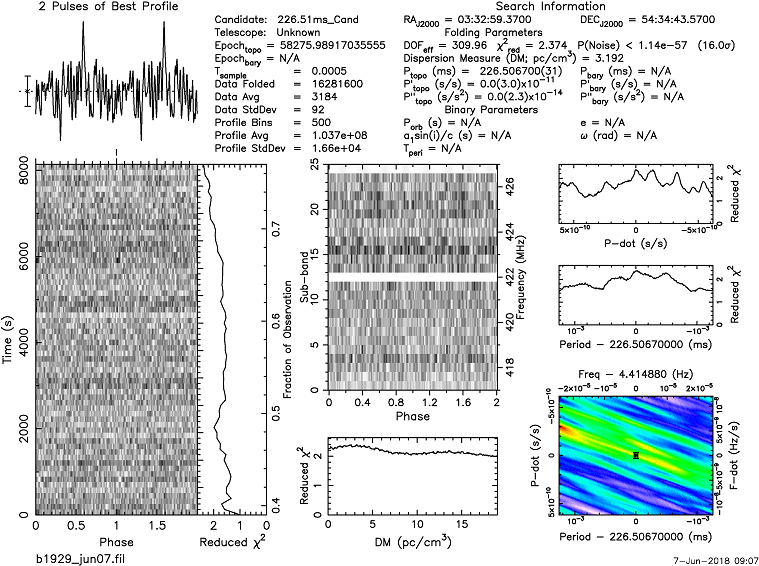 420 MHz, 10 MHz bandwidth
420 MHz, 10 MHz bandwidth










